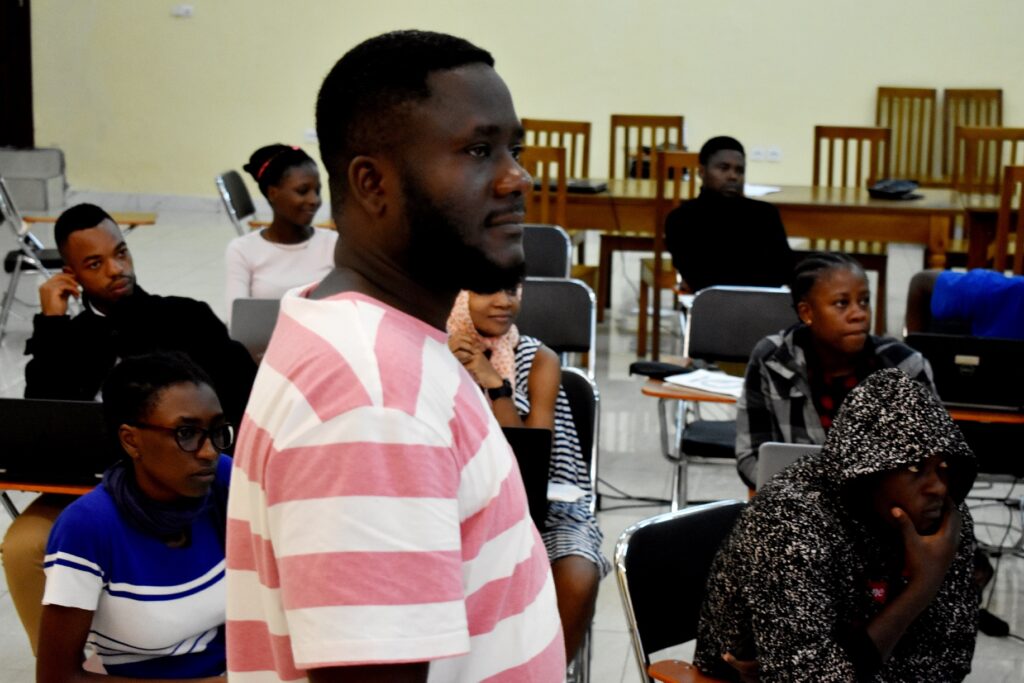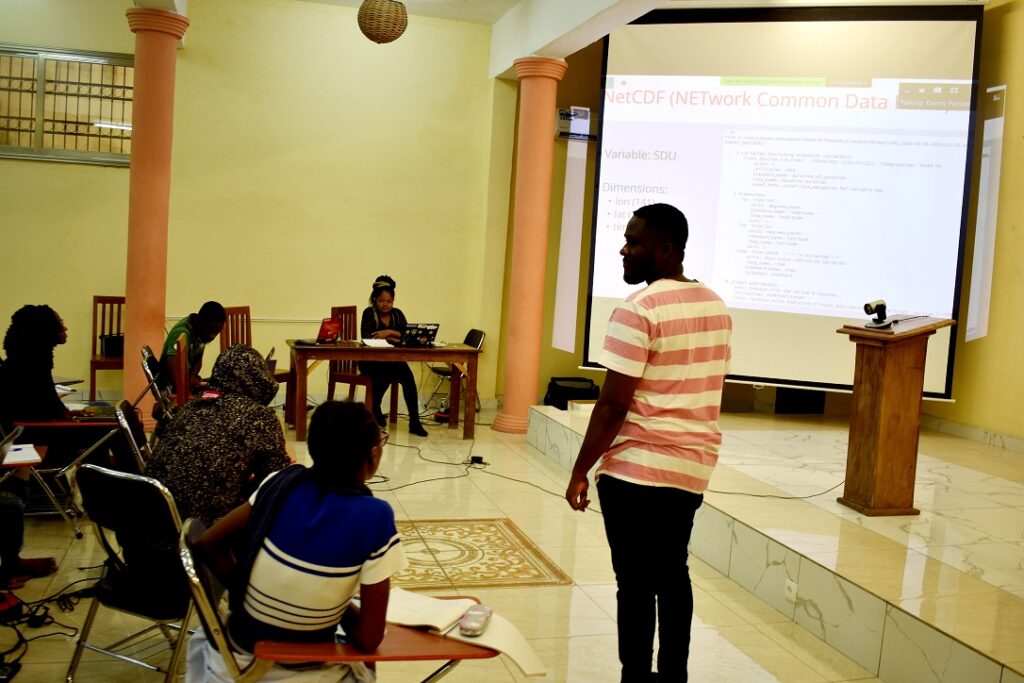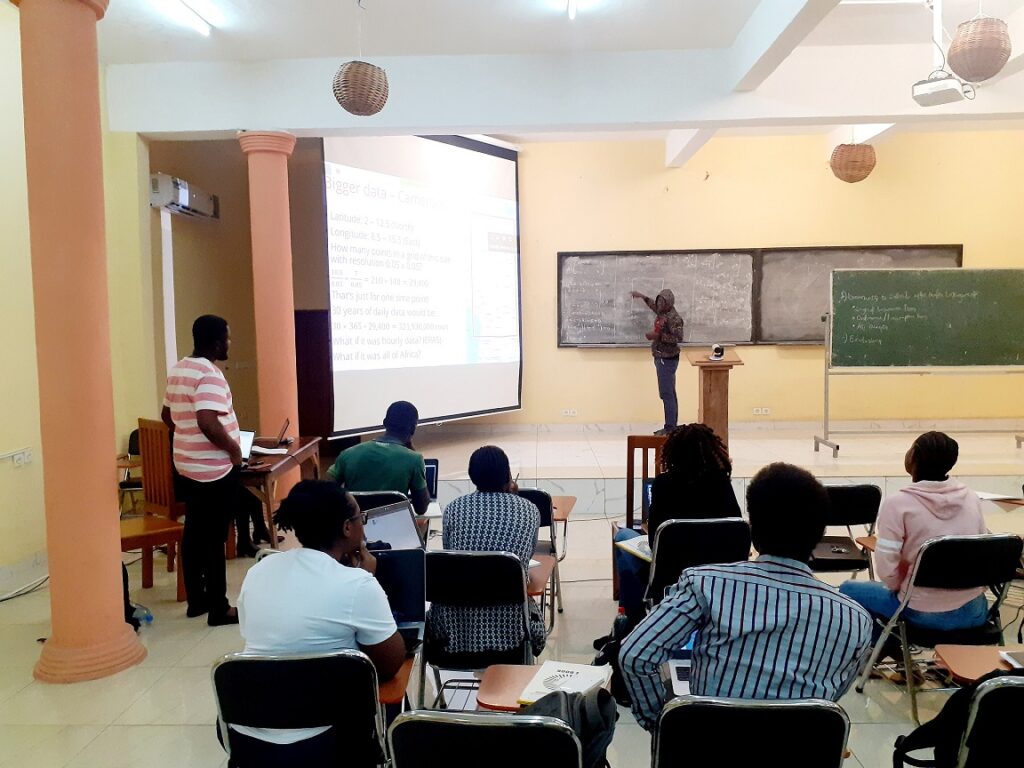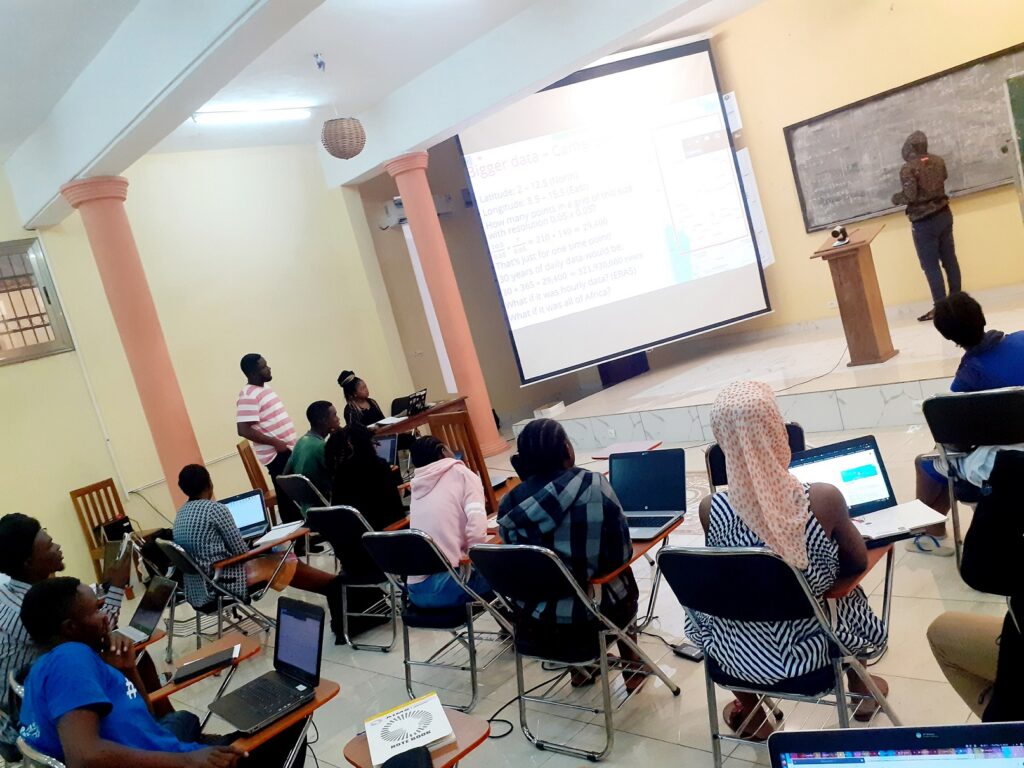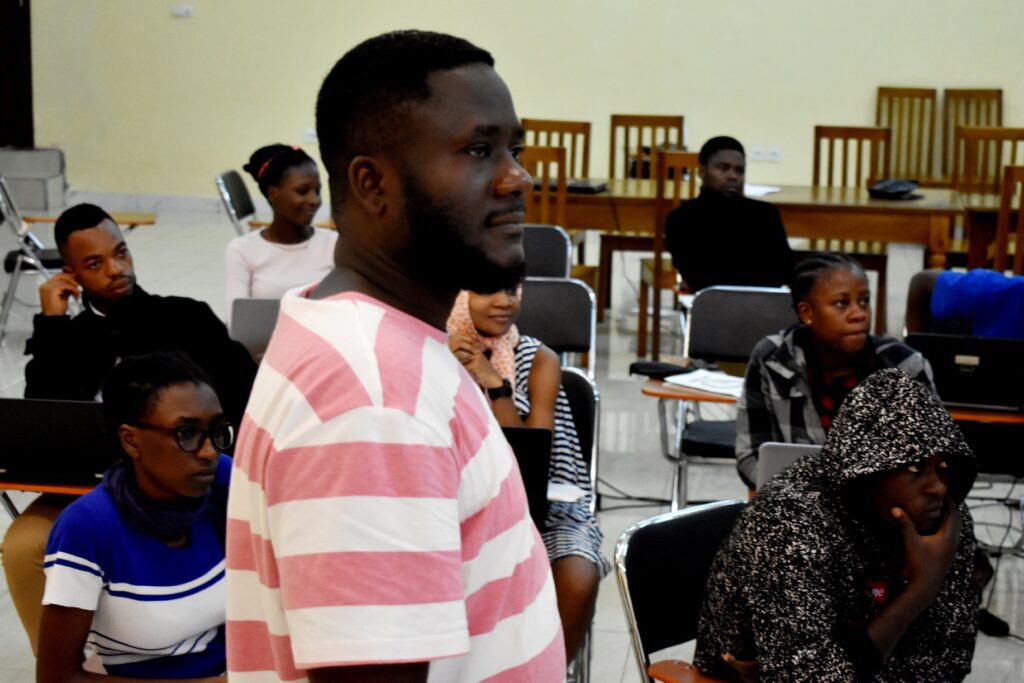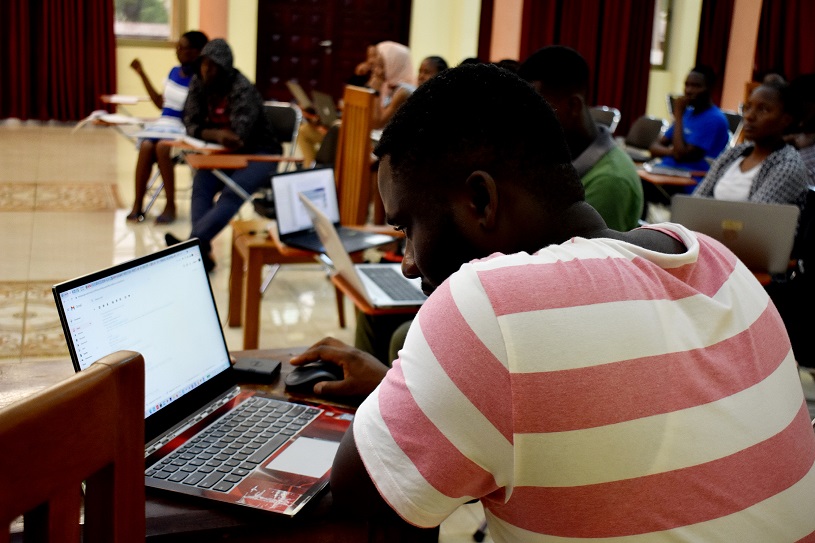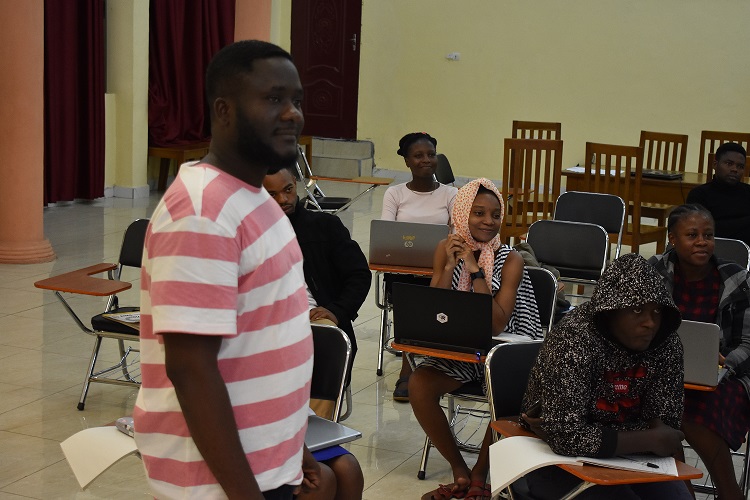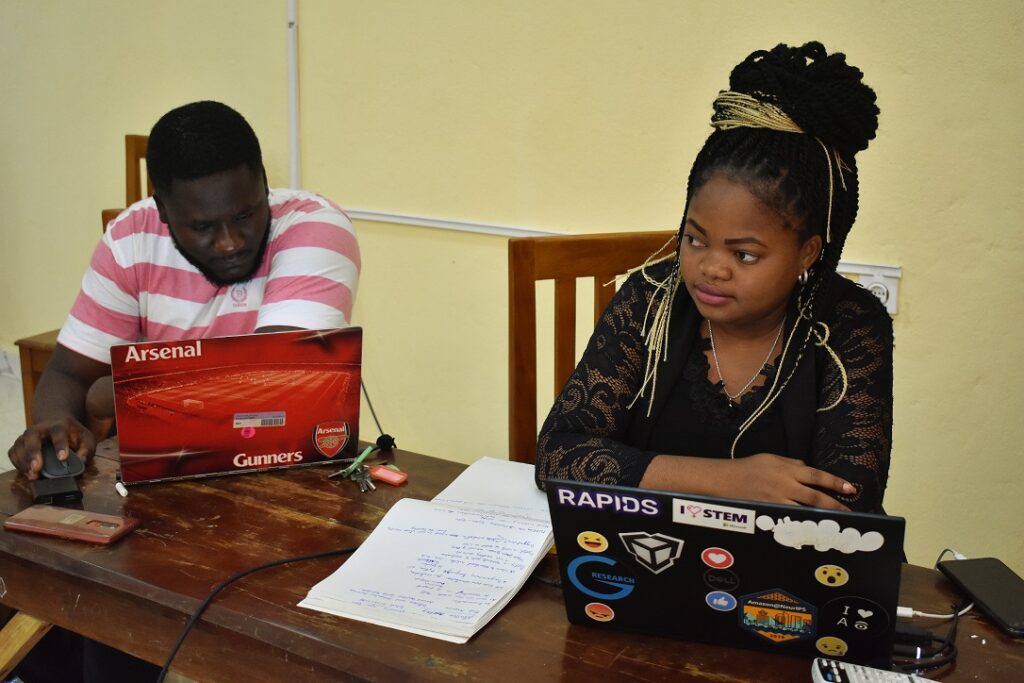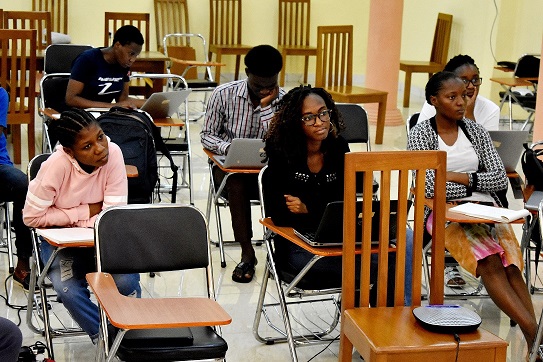Climate Science students of AIMS Cameroon have entered the last block of courses before they take on their research projects. Arriving early this week, Climatic Data Analyst and AIMS Ghana Alumnus Francis Torgbor introduced the students to Statistical Climatology and its use in areas such as agriculture, health, industry, education. Torgbor explained that many shocks such as droughts, floods, extreme temperatures and wind-speeds, are climate-related. If the National Meteorological Service in each country does short-term forecasts, seasonal forecasts and aviation, they are also custodians of the historical climatic data in the country. However, historical climatic data needs to be well entered, checked, managed and then analyzed. While this needs statistical skills, relatively few staff have the much-needed skills obviously because Statistics is not very well taught.
The lecturer said they were trying to change that in the many areas that need an analysis of historical data and hoped the current AIMS students doing that course will contribute to the change.
Delivered since Monday 3rd May to Saturday 8th May, the Climate Statistics course also includes online lectures by a few other statisticians such as Roger Stern and Danny Parsons from the University of Reading in the United Kingdom and James Musyoka. They are assisted by Tutor Berthine Nyunga, expert in artificial intelligence.
The course is very practical and students are groomed to apply their existing statistical skills to problems involving climatic data; enrich their skill set with methods of analysis that apply more generally than only to climatic data; contribute to the solution of interesting problems and also understand examples of how research questions can arise from even small extensions of practical problems. “Your main assessed work will be to build a portfolio of analyses using the methods we will introduce,” the lecturer told the students.
Apart from Statistical Methods such as a case study on its application to agriculture using PICSA (Participatory Integrated Climate Services for Agriculture); circular data with application to Air Pollution and Hydrology, other areas touched by the lectures include using Station Data effectively; Satellite and Reanalysis Data; Markov Chains for analyzing rain data: Crop Simulation models as well as using a large rescued data set.

